Posadas and Piñatas
It’s one thing to SEE a tradition in another culture, it’s a whole other world to be a part of it. Living in Mexico has allowed us to get to know our neighbors and learn about Mexican traditions and culture. One of those traditions is Las Posadas.
Posadas is Spanish for lodging or accommodation. This tradition celebrates Joseph and Mary’s search for a place to stay the night Jesus Christ was born. Las Posadas lasts for nine days between December 16 and the 24th. Nine days seems unusual, but each day represents one month of Mary’s pregnancy with Jesus.
The people of Latin America have celebrated Las Posadas for over 400 years. Winter Solstice and Tonantzin Guadalupe, the Mother of Gods, were celebrated on December 12th. The sun god Huizilopochtli was born during the month of December. Because of the similar foundations of both the Aztec and the Christian celebrations, it was easy for the Spanish priests to intermingle the two cultures.
What Happens During Posadas?
To start the Posadas, everyone meets at one house where they drop off food for the dinner later and get a candle. Sometimes people dress up as Joseph and Mary (or in Mexico, Jose and Maria) and reenact their search for a place to sleep that night in Bethlehem. The group visits houses that are pre-determined, and some are marked with nativity scenes outside the house. This is a favorite tradition among families and friends. Some neighborhoods will have a Posada every day for an entire month because everyone wants to participate.
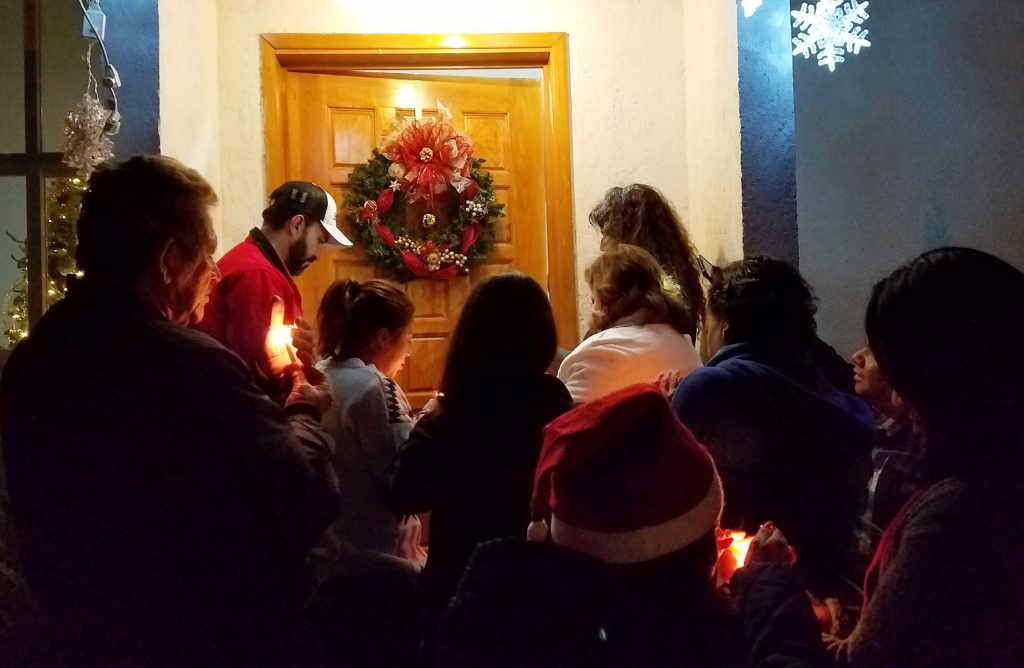
The Posada Song
Our neighborhood is still small with only 18 families. Our group did not dress up as it was freezing cold that night and the wind kept blowing out our candles. We were all given a sheet of paper with the song to sing for the Posada. The verses on the left were sung by the people outside (Mary and Joseph). The song on the right was sung by the “innkeeper” inside the house.
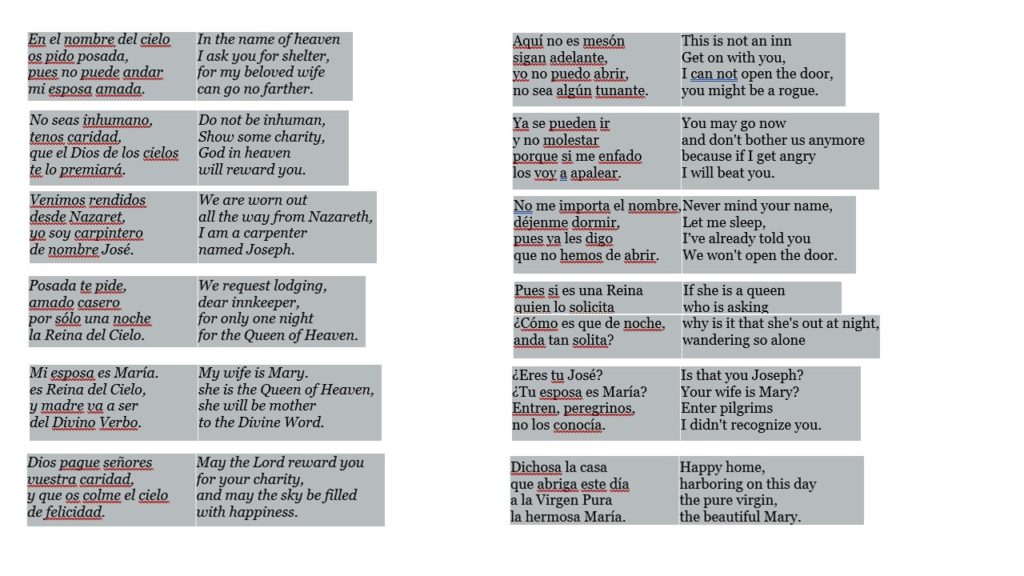
We walked to one house where one of neighbors went inside to be the “innkeeper”. The rest of us stood outside and began singing the first verse of the song asking for admittance. Our neighbor inside sang the first verse of refusal. The first 4 verses are sung for each part. We repeated this at the next house. At the third house we sang all the verses and were “allowed” to come in. This is where everyone sang a third part of the song giving thanks and blessings.
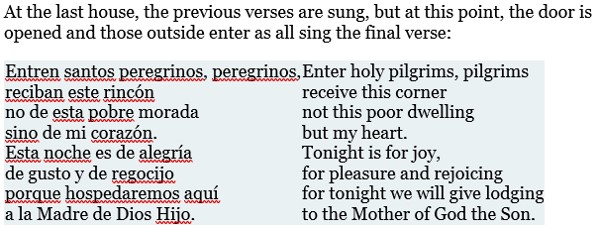
Piñatas
Back outside again, it was time for the piñatas! Our host’s brother stood on the 2nd floor balcony of the house and threw down a rope. The piñata was secured in the middle of the rope and the other side was tied to a truck trailer. The piñata could be lowered or raised depending on the height of the person and how hard they were hitting. We started with the youngest and moved up the age ladder. Everyone sang(the piñata song (below) and each person had until the song ended to break open the piñata.
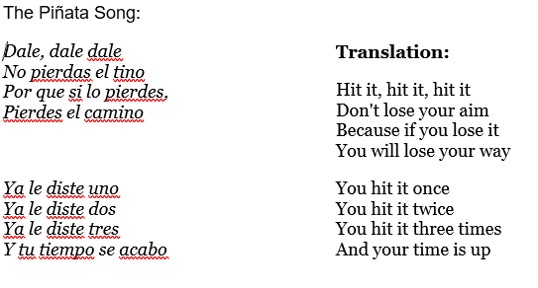
Piñatas are sturdier than we thought. Paper-Mache may be on the outside, but the core of the piñata can be made of clay or cardboard. Our piñatas were the cardboard variety which took many beatings before it broke.
What is the Significance of the Piñata?
Piñatas are a popular party favor but there is meaning behind this colorful toy. Spanish friars and priests introduced the piñata as a way to teach the indigenous people about Christianity. In modern times we see piñatas in different shapes and some resembling superheroes, but the original piñata is shaped like a star with 7 points representing the 7 deadly sins (greed, sloth, pride, lust, gluttony, wrath and envy). The stick is the will to overcome sin, and the person is blindfolded as a way to represent faith in what we cannot see. The sweet treats inside the piñata represent all the the goodness in heaven. So by “beating” the sins away, you will receives the riches of heaven. Get it?
Piñatas aren’t just for Christmas. They are also a favorite at birthdays or any celebration.
Almost everyone had a turn at trying to break the piñata. The kids started first without the blindfold, then later they wanted to be blindfolded and spun just like the adults. The star points fell off first which the kids grabbed to have a place to store the goodies that flew out. Everyone got into singing the piñata song, and some even shared childhood memories with us about past posadas and pinatas.
Posada Dinner
Inside, it was time for our dinner. Mexican Christmas food usually consists of ponche, pork and chicken tamales and pozole, but ours was more of a potluck taco smorgasbord. We had conchinita pibil, chorizo with mole verde and shredded chicken for the meats, peppers, onions, and salsas for the toppings, and beans and pasta salad for the sides.
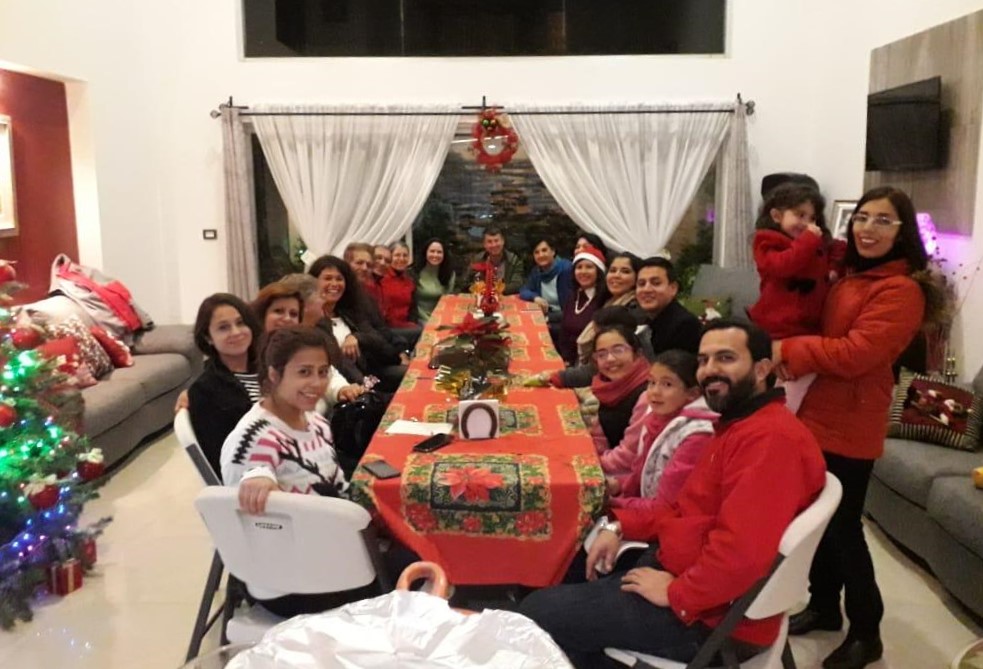
Ponche, a Christmas punch that consists of boiling fruits, spices and sugar cane in water was served throughout the night. It tastes like warm apple juice, and sometimes wine is added to it. We had a number of kids at our posada, so I don’t think the wine was added. Everyone makes it slightly different. Adult beverages such as tequila, beer and wine also were shared up and down the table.
Dessert
We were also celebrating a birthday of one of the little girls. Dessert was a chocolate birthday cake with a candle that was questionable for use indoors, and a jello cake. Jello cake is very popular, but I preferred the chocolate cake.
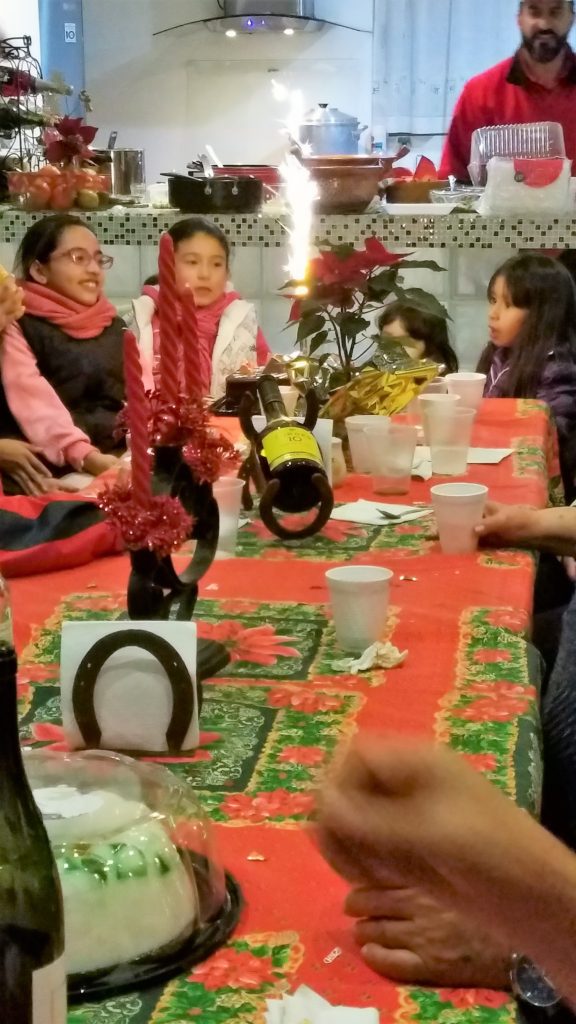
Games
Regardless if it’s a posada or a birthday, games will be played.
The first was Loteria, a type of Mexican bingo. Each card has 16 pictures on it, and the goal was to fill up the entire card with bottle tops. Once it’s filled, you shout out LOTERIA! One person called out the pictures from a card deck. Tom and I were pretty good at it, and it was a great way to learn new words. On our second round, one of the little girls called out the cards, and when she drew a pescada, she called out FISH! Everyone had a good laugh at this.
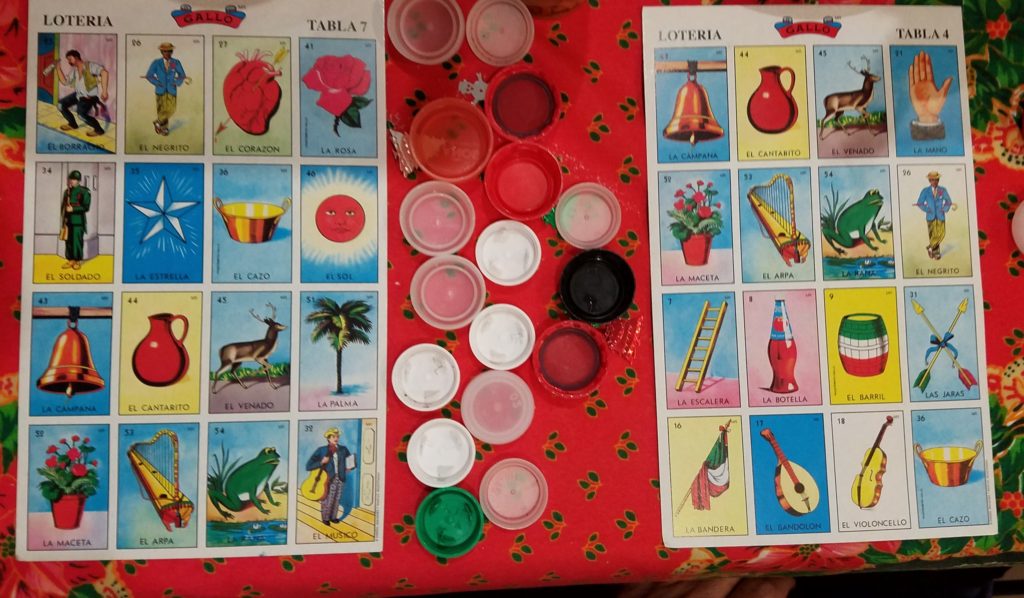
The second game could be played at a birthday or posada. One well-wrapped gift was placed in the middle of a table. One person at a time can try to open it. The person to their right rolls a dice until they roll a 6. Then the gift is passed to that person, and the dice is moved to the next person on the right.
Sounds easy enough, right? Here’s the catch…the person who is trying to open the gift must wear a hat and scarf and try to open the gift while wearing oven mittens. But if the person next to them rolls a 6 right away, they barely get the mittens on before they have to give the gift away! It’s kind of like a Hot Potato game, except you WANT the potato as long as possible.
Opening any gift with oven mittens on is a tough task on its own. But when the gift is in a box that’s taped all over with packing tape, then giftwrapped complete with a ribbon and bow, it’s next to impossible. Watch the video below to see how chaotic and fun this really is!
It turns out a lot of people in our neighborhood speak a little English, and between us all, we could figure out the Spanish/English version of most of the words.
Experiencing a traditional posada with your neighbors can’t be found in a tour book or on travel website. This has been one of our highlights of living in Mexico.
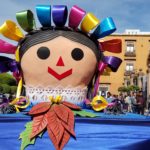
Read about other Mexican traditions in Merry Christmas- Love, Mexico.
[wp_ad_camp_1]

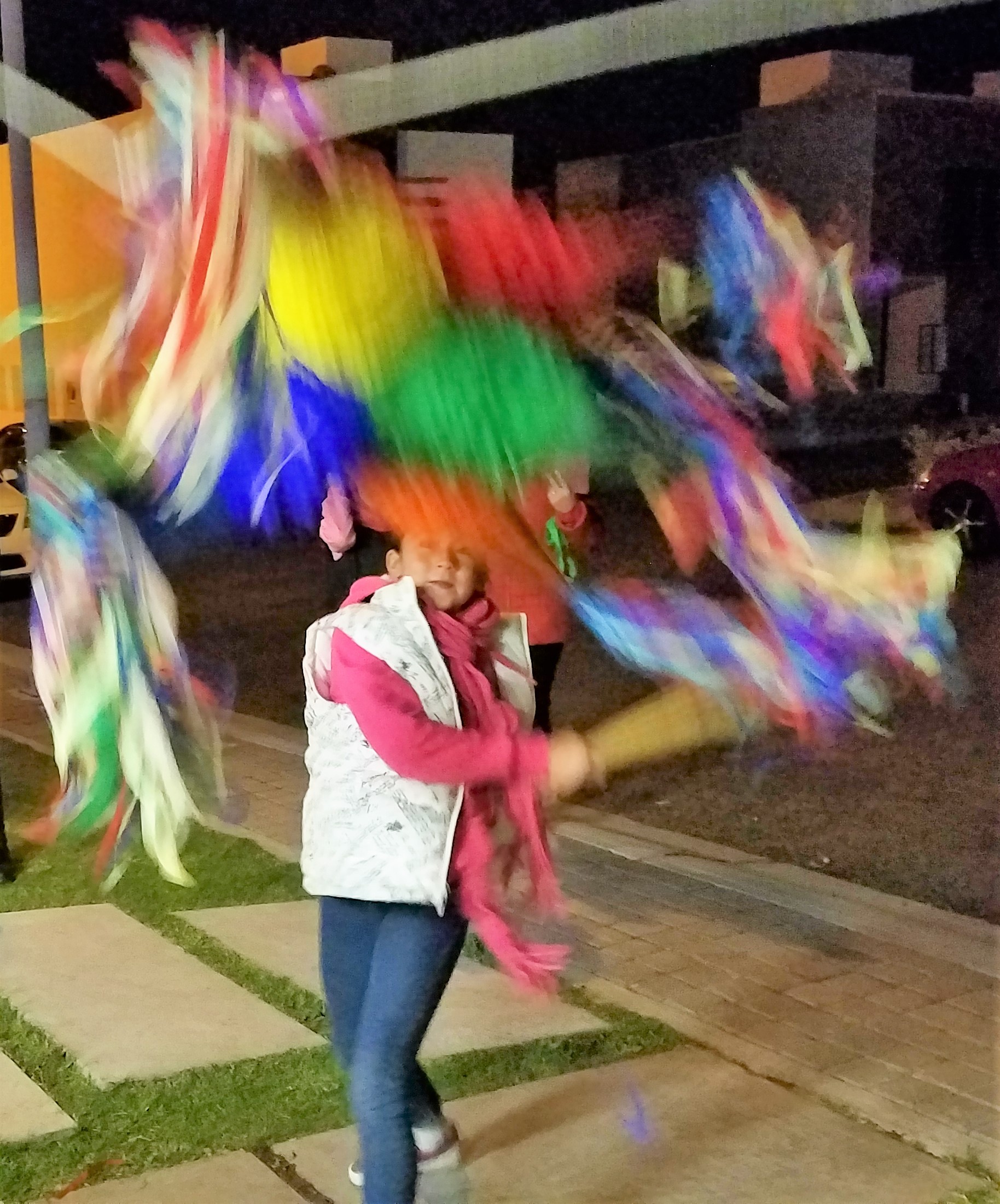

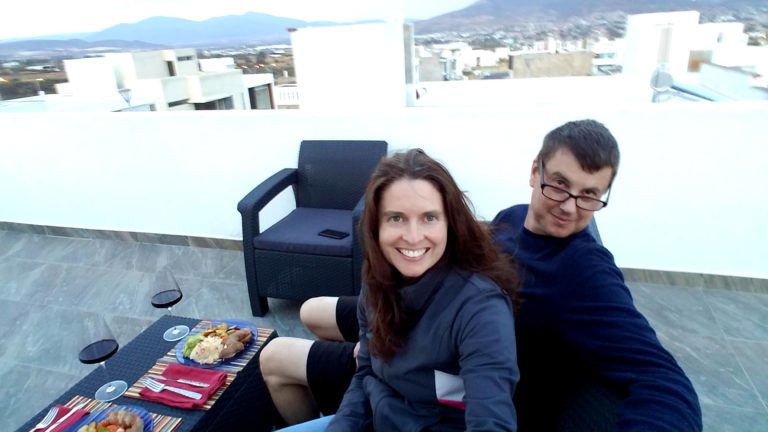


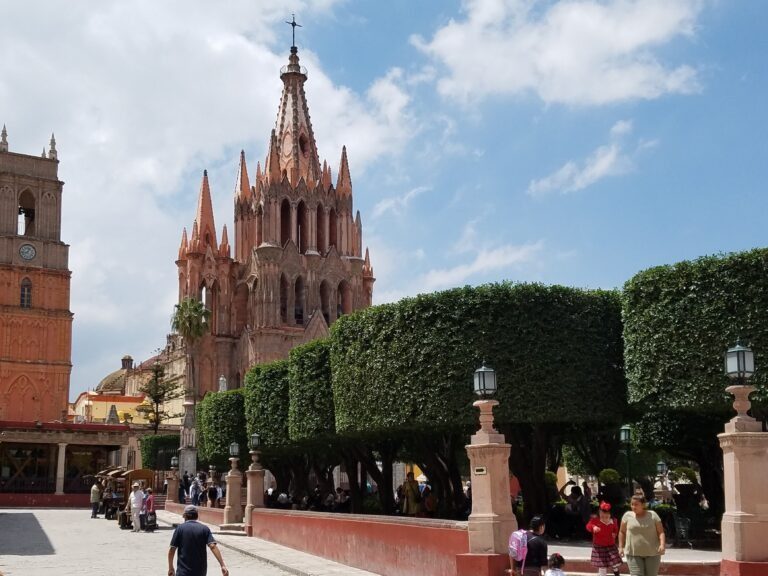

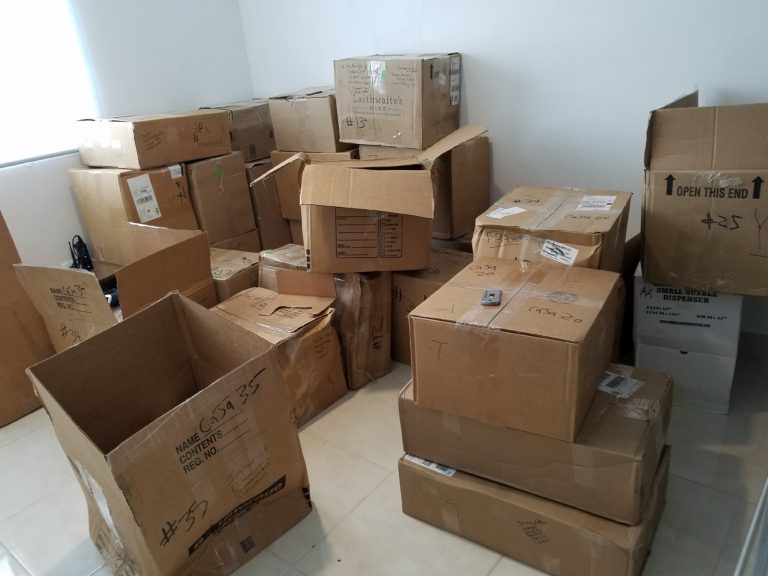
One Comment
Comments are closed.